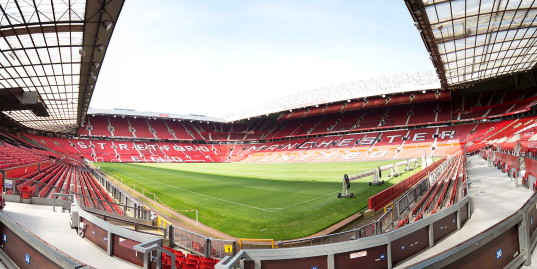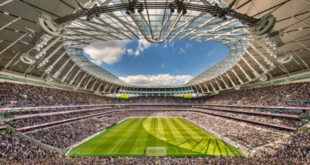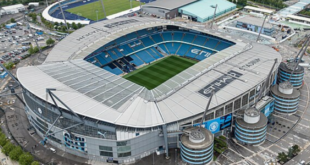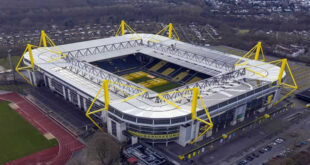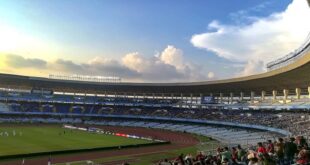| Stadium Name: | Old Trafford |
| Constructed: | 1909 |
| Location: | Sir Matt Busby Way, Old Trafford, England |
| Capacity: | 74,310 |
| Home Team: | Manchester United |
| Owner: | Manchester United FC |
| Record Attendance: | 76,962 |
History
Old Trafford is one of the most iconic and prestigious football stadiums in the world. Home to Manchester United Football Club, Old Trafford is located in the heart of Greater Manchester, England, and has been the home of the club since 1910. The stadium has a rich history and has witnessed some of the greatest moments in football history. In this article, we will explore the history, architecture, and significance of Old Trafford.
The history of Old Trafford begins in 1909 when Manchester United’s then-owner, John Henry Davies, purchased the land on which the stadium now stands. The stadium was initially named “Trafford Park” and was constructed with a capacity of 80,000. The stadium was designed by the renowned architect, Archibald Leitch. He was also responsible for designing many other iconic stadiums in the UK, including Highbury and White Hart Lane.
The first match played at Old Trafford was on 19 February 1910, when Manchester United played Liverpool. However, disaster struck in 1941 when the stadium was bombed during the Second World War, resulting in significant damage to the stands and the playing surface. The stadium was eventually rebuilt and reopened in 1949.
Since then, Old Trafford has undergone several renovations and expansions. The most significant of these came in the late 1990s. When the stadium was extensively redeveloped to increase the seating capacity to over 76,000. The redevelopment also included the addition of several new stands, corporate facilities.
Architecture
Old Trafford’s architecture is an amalgamation of both traditional and modern design elements. The stadium has a unique bowl-shaped design, with stands that wrap around the playing surface. The roof of the stadium covers all four stands, providing shelter to fans from the elements. The design of the stadium ensures that fans have an unobstructed view of the playing surface, no matter where they are seated.
The stadium’s four stands are named after prominent Manchester United players and managers. The “Sir Alex Ferguson Stand” is the largest stand in the stadium and is located on the west side of the ground. The stand is also home to the club’s directors’ box and hospitality facilities. The “South Stand” is located on the opposite side of the ground and is reserved for the club’s most vocal and passionate supporters. The “East Stand” and “North Stand” are located behind each goal and are typically occupied by a mix of home and away fans.
The significance of Old Trafford
Old Trafford is more than just a football stadium. it is a symbol of Manchester United’s rich history and traditions. The stadium is also a source of pride for the people of Manchester, who consider it to be a cultural landmark. Old Trafford has been the site of some of the greatest moments in football history.
Old Trafford is also an important economic engine for the local community. The stadium attracts millions of visitors every year, generating significant revenue for local businesses and supporting thousands of jobs in the region. The stadium is also a hub for social and cultural activities, hosting concerts, exhibitions, and other events throughout the year.
Old Trafford is a true symbol of footballing excellence and a testament to the rich history and traditions of Manchester United. The stadium has witnessed some of the greatest moments in football history and continues to inspire generations of fans from around the world. As Manchester United continues to evolve and adapt to the changing world of football, Old Trafford will remain a constant reminder of the club’s past, present, and future.
 Sweaty Goal Everything about Football
Sweaty Goal Everything about Football
